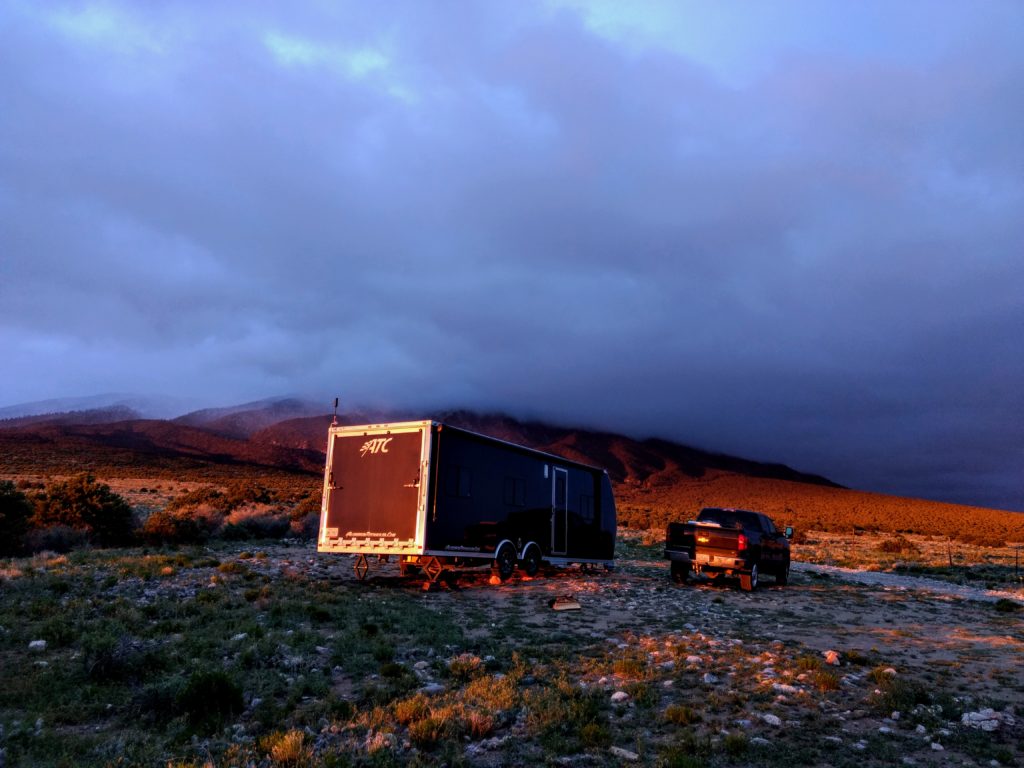You can find dispersed camping on lands managed by the BLM, national forests and grasslands, Bureau of Reclamation, National Wildlife Refuges, and the Army Corps of Engineers. Most states also provide lands open for dispersed camping. Some national parks offer dispersed camping in limited amounts.

Where Can I Find Dispersed Camping?
Dispersed camping is mostly found on lands managed by the Bureau of Land Management (BLM). All of the land managed by the BLM is found in western states, and most of that is found west of the Rocky Mountains. You will need to access BLM maps to find these lands. Read our other article, “BLM Land Maps – Where to Find Them“.
Once you know where BLM land is, you can literally camp anywhere, as long as your vehicle remains on established dirt roads, trails, or clearings. The BLM prefers that you set up your camp in areas that were previously used for camping. You are not allowed to drive your vehicle over plants and animal habitats, though there are certain rules about off-road driving. Read our article, “Can I Drive my RV Off-Road on BLM Land?“
National Forests and Grasslands
You can find dispersed camping on national forests and grasslands too. the U.S. Forest Service is the second largest provider of dispersed camping, next to the BLM. All national forests and grasslands offer dispersed camping, however, each forest and grassland gets to decide where. Dispersed camping is only allowed in certain areas, so be sure to inquire at a visitor center or ranger station to find out where they want you camping.
You can determine this for yourself by using a Motor Vehicle Use Map (MVUM). Each forest and grassland produces their own map. This map shows where vehicles are allowed to drive, and from what roads dispersed camping is permitted. If a map does not specify where dispersed camping, then it’s assumed its permitted anywhere. MVUM also illustrate the specific boundaries of a forest or grassland, so that you don’t accidentally wander into private property.
Read our article, “How to Use Motor Vehicle Use Maps (MVUM) to Find Free Camping“.
Some National Parks Permit Dispersed Camping
You will have to check with a visitor center to find out if the national park you are interested in offers dispersed camping. National Parks refer to this as, “Backcountry Camping”. Many parks will permit you to camp along dirt roads further away from popular areas. But because national parks are more strictly patrolled, you need to make sure you camp in the right areas, and follow their rules. Many national parks only allow tent camping in backcountry areas. Read more about this at, “Boondocking in National Parks – How and Where“.
National Wildlife Refuges Offer Dispersed Camping
Not all national wildlife refuges offer it, however. The U.S. Fish and Wildlife Service regulates over 500 refuges across the country, but only a handful permit dispersed camping. We have created a guide that shows which refuges permit dispersed camping, along with their rules. Find it at, “Camping at National Wildlife Refuges“.
Some State Managed Lands Permit Dispersed Camping
You’re going to have to dig further by calling various state parks and state forests to determine if they permit dispersed camping, and where. There is more availability in the western states. Within the central states and eastern states, most of the dispersed camping is focused around lakes, particularly where fishing is permitted.
The Best Apps to Find Dispersed Camping
There are some really good apps and websites that list dispersed camping sites, here our favorites…
- Boondocker’s Bible – https://www.boondockersbible.com/map/ – We’ve assembled one of the best online maps with hundreds of boondocking sites.
- Campendium: https://www.campendium.com – Has the most reviews of any app or website, all curated from other campers.
- FreeCampsites.net: https://www.freecampsites.net – Has the most listings of free camping, though many of the entries are Walmarts, Casinos, and rest areas.

